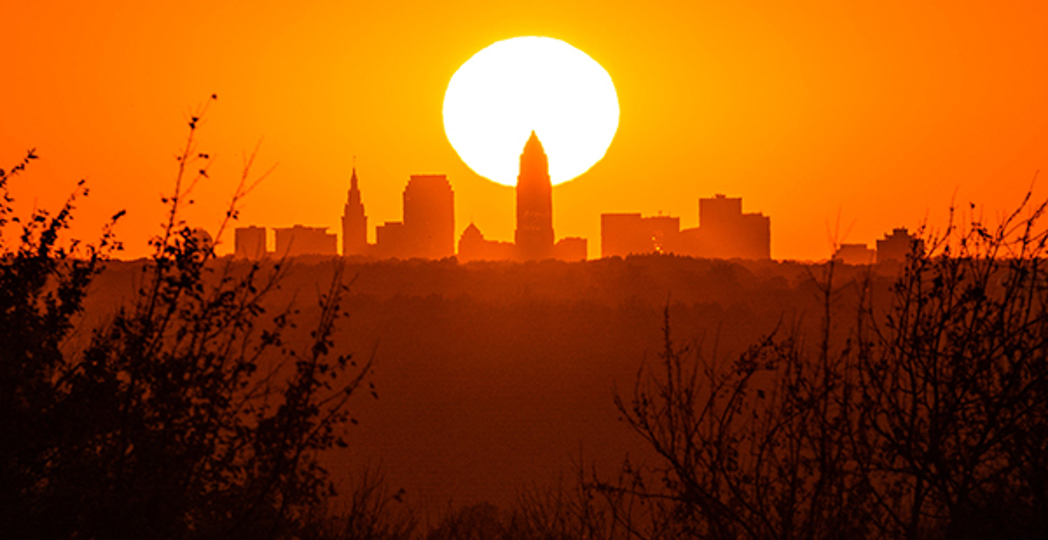After a Sizzling Summer, Cleveland Braces for a Warmer Fall
by Jaden Stambolia | Oct. 2, 2024 | 11:00 AM

Courtesy Erik Drost, iStock Photo
After sweating through its sixth-hottest summer since 2000 and watching the rain gauge gather dust with the third-driest summer in more than two decades, Clevelanders are yearning for a break from the heat. But as the leaves begin to turn, it seems fall has a few surprises in store for Cleveland.
Don't worry. We won't have six consecutive days of 90-plus degrees as we did in June, but Scott Handel, Head of Forecast Operations for NOAA, says Cleveland’s upcoming fall will likely be warmer than usual.
“The Cleveland area in particular for the October, November, December season, we're expecting roughly a 40% chance of above normal temperatures,” Handel says. “These recent trends tend to tilt warm for the Cleveland area.”
NOAA builds its seasonal outlook using a probabilistic forecast system. Forecasters evaluate the probabilities based on models using climate data and trends — this year’s fall prediction aligns with Cleveland's recent trend of milder falls in the past decade.
With the warmer weather, there might come more rain. Handel noted that NOAA has a slight tilt toward above-average precipitation for Cleveland, with a 33-40% prediction. However, the signal is weak due to the possibility of a La Niña forming.
Despite a really dry summer, Cleveland is not currently at risk for a drought. In fact, Handel said this is mainly due to their projection of above-normal precipitation levels this fall, which could improve northern Ohio’s drought status to some degree.
“One thing that's complicating the forecast is the La Niña this time around this season. This cold season is coming up, and it's not likely to be strong,” Handel says. “There's about a 71% chance that we will develop a La Niña in the September, October, and November season.”
SUMMER STATS
It was Cleveland’s sixth-hottest summer since 2000 and the 10th-warmest ever.
The average temperature was 73.5 degrees
Since 2000, only 2016, 2010, 2005, 2019 and 2012 were hotter.
We had six straight days of 90-plus degrees in June
The last time Cleveland had six consecutive days of 90-plus degrees was the summer of 2017. Summer of 2020 had five consecutive days.
The overall record is 12 days in a row of 90-plus degrees from 1940.
It was Cleveland's third-driest summer in over two decades.
This Summer, Cleveland received 7.46 inches of rain, 3.60 inches below normal (11.06 inches).
It was the third driest summer since 2000.
- 2016 received 7.44 inches of rain.
- 2002 received 5.79 inches of rain.
-is-a-recurring-climate-pattern-that-impacts-weather-patterns-around-the-world-.jpg?sfvrsn=3424f68c_1)
La Niña is a climate pattern that is part of the El Niño-Southern Oscillation (ENSO) cycle that can last anywhere from nine months to years. For Ohio, it can cause higher-than-average temperatures and wetter seasons.
Even with warmer temperatures predicted, Clevelanders should not forget the infamous weather variability of Northeast Ohio — meaning residents shouldn’t forget to get out their winter clothes and gear. Lake-effect snow, a phenomenon Clevelanders are very familiar with living next to Lake Erie, can still occur, especially in the later fall months of November and December, Handel says.
“In Cleveland, especially in November and December, you start getting into lake effect season. You can get lake effect events and so forth, and you can get significant snowfall even if the overall season is favored to be above normal,” Handel says.
For now, Clevelanders should enjoy the milder fall, but as always in Cleveland, they should be ready for anything.
For more updates about Cleveland, sign up for our Cleveland Magazine Daily newsletter, delivered to your inbox six times a week.
Cleveland Magazine is also available in print, publishing 12 times a year with immersive features, helpful guides and beautiful photography and design.

Jaden Stambolia
Trending
-
1
-
2
-
3
-
4
-
5










